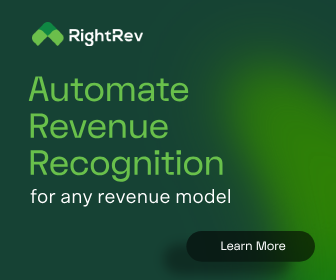The role of the finance department has shifted from a number-crunching entity to a true strategic asset. To live up to the expectations of the C-suite, your finance team will need to leverage the insights from its financial reports to guide next year’s business strategy.
Here’s how you can showcase your ability to interpret and act on year-end data to drive organizational success.
Identify Revenue Trends
Year-end reports offer a clear view of revenue streams and market demands. They can also provide a glimpse into customer behavior and relevant patterns that impact your company’s bottom line. As you look back on 2024, pay close attention to peak seasons, products that fell short of expectations, and any other bumps in the road.
Looking at the big financial picture can reveal some trends. However, you’ll need to dig a little deeper than that to maximize the usefulness of year-end reports. Slice and dice your revenue data by different criteria, such as:
- Product
- Region
- Customer demographic
Each report reveals a valuable piece of the revenue puzzle. You can also compare product performance to data from previous years to see which items remain popular and which ones may be due for redesign or replacement.
Evaluate Budget Variances
No budget is perfect, and there are bound to be some discrepancies throughout the year. However, severe variances are noteworthy and need to be explored further. Dig into the root causes of significant issues and determine whether they indicate one-time events or ongoing concerns.
Use what you learn to adjust future budgets to more accurately reflect spending patterns. The more dialed in your budget is, the better prepared your organization will be when the unexpected happens. Share findings with department heads and the C-suite to demonstrate your value as a strategic partner.
Monitor Cash Flow
Cash flow statements are extremely valuable components of a year-end report. Look back at 2024 to identify periods that were fiscally tight and times when the business had a surplus. Use those insights to maintain healthy cash flow in 2025 and fund growth initiatives.
For example, suppose that your business experienced a lull in the middle of summer. In that case, you may want to look back on 2023 as well. If the same lull occurred then, you can reasonably expect a similar downturn in 2025.
Use this information to bolster cash reserves ahead of the predicted slow period. You should also coordinate with the sales and marketing teams to address the drop in cash flow and promote better revenue stability.
The more data you gather during the year-end close, the more accurately you’ll be able to forecast future cash flow scenarios. Prepare for potential challenges, such as the example above, to mitigate your company’s reliance on loans or lines of credit.
Set Key Performance Indicators (KPIs)
The amount of data involved in the year-end close process can be overwhelming. It’s up to you to cut through the noise so you can identify the information that actually matters. That means setting key performance indicators (KPIs) and tracking those metrics in accordance with organizational goals.
Some metrics you may want to monitor include the following:
- Year-over-year revenue growth
- New customer acquisition revenue
- Procurement savings
- Cash conversion cycle
Share your findings with the C-suite and work with them to establish relevant goals based on the KPI data you collect. For example, you could aim to achieve $1 million in revenue from a new market.
Incorporate Scenario Planning
Flexibility plays a key role in organizational resilience. Scenario planning enables your company to anticipate a range of possible outcomes and prepare for uncertainties. However, to create relevant scenarios, you need a wealth of high-quality data. That’s where your year-end close reports come into play.
By using the data you gather during the end-of-year reporting process, you can run a variety of scenarios based on factors like:
- Potential impacts
- Likelihood of occurring
- Best-case/worst-case
If a scenario could have severe implications for your business and has a reasonable chance of actually happening, your finance team can coordinate with the C-suite to develop contingencies.
However, it’s important to update your models routinely using relevant data and market conditions. Consider re-running key scenarios periodically throughout the year and updating your contingency plans accordingly.
You want to be as prepared as possible for unexpected scenarios. At the same time, though, you should avoid wasting too much time and energy worrying about highly unlikely possibilities.
Unlock the Strategic Value of Year-End Reports
Year-end financial reports can be a roadmap to future success. When approached strategically, they can drive better decision-making and collaboration within your organization. However, before you can tap into the insights from year-end reports, you must ensure that the process goes off without a hitch.
With the end of the year fast approaching, you should create a checklist and gather critical documents now. That way, you can ensure a smooth, efficient process that yields actionable information for your organization.




